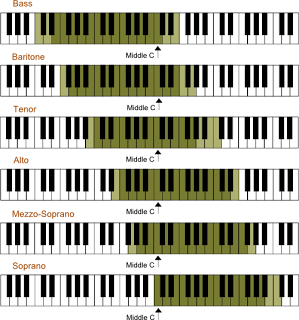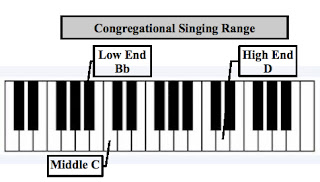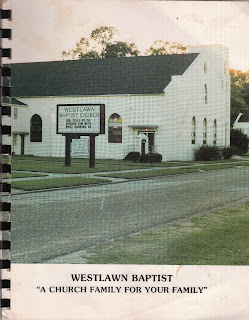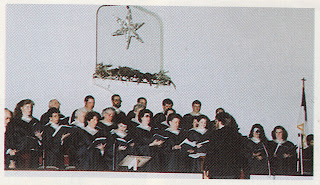Running Back to the Hymns
I was invited to a wedding this past weekend here in Nashville. The groom, a former bandmate of my son, invited all the band guys to be groomsmen. He was marrying a musician, so, needless to say, the wedding ceremony included a lot of great music.
Looking around the sanctuary, every other seat was taken by a musician. It was obvious–just like most Nashville audiences . The bride selected celtic-styled songs straight out of the hymnal, and the instrumentalists played the ancient melodies on fiddle, mandolin and piano. Everyone seemed to enjoy the pre-wedding entertainment.
Then the wedding party started their stroll down the aisle. The groomsmen were clothed in Converse All Stars, white shirts without ties, and bluejeans, held up with black suspenders. The bridesmaids wore very simple mint green dresses—with not a hint of extravagance that a previous generation might have chosen for their wedding ceremonies.
Then all of a sudden, it hit me…
With the hipster-style clothes, the austere decore (not a flower in sight), and Avett Brothers-style music, I saw the Millennial Generation in full display. Being of the Baby Boomer Generation myself, I made an interesting observation as the pastor asked us to “stand and turn in your hymnbooks to page number…” Having come from a generation that all but ditched the hymnal–and boxed them up to be stored in the church basement–I was surprised to see these twenty-somethings pull the old books out, almost in a cutting-edge move, in a rebellious sort of “in-your-face” play.
It’s proof that many young believers are embracing tradition. They’ve seen their mom and dad run from traditional church hymns, toward choruses and pull-down screens, filled with lyrics of a thousand praise and worship songs that, because of an over abundance, no one has had a chance to memorize. Instead, these Millennials are running back to the solid foundation and familiarity of the hymns that many of us have abandoned.
I was reminded at the wedding Saturday that maybe its time to get back to simplicity. Maybe my kids have watched me chasing after the next fad, the newest song, way too many times. I am about ready to follow their lead.
Get On the Same Page With Your Worship Team
One area of debate among worship team members and leaders is: which system of musical communication is most effective? Leaders tend to stay within their own comfort zones, and usually supply the team with their preferred system. The three most common are: chord-over-word-style sheets, charts and the Nashville Number System.
Frankly, I use each of these methods at certain times, and I especially make use of the Nashville Number System while writing, figuring out chords to a new song, or creating an arrangement. But I prefer to use charts, either created myself in Finale®, or from resources like Praise Charts.
Below is a quick description, along with pros and cons, of each method. I’m sure that proponents of any particular system will want to staunchly defend it’s use. I understand. Musicians are passionate, and the debate over written forms of music continues to stir up heated conversation!
Chord-Over-Word Sheets
This system is the most common among guitar-based worship teams. With the words written out and chords situated directly above, each player can easily reference a song’s structure with little difficulty. It’s easy for someone with limited musical training to create their own arrangements and use this system.
The Pros:
-
Easy to read and write (no music reading skills necessary)
-
Most songs can be typed or written out in their entirety on a single sheet of paper
-
The song’s layout (roadmap) can be written in shorthand at the top of the page
-
A good, quick reference guide to the song during performance
The Cons:
-
Doesn’t accurately include time durations between chord changes
-
Doesn’t offer intricate details of musical rhythm, dynamic expression, written melodies or specific instrumental cues
-
Chords must be rewritten if a key change is necessary
-
Not an effective detailed representation of a song, especially when cataloging and creating a formal library of worship music
Charts
As charts and lead sheets utilize formal musical notation, they take some skill to read and compose. By nature, this system proves to be the most comprehensive of all for use of its specific musical information.
It’s up to the writer of each chart to determine just how much “detail” is necessary for a song. For practical means, the arranger may want to limit information in order to cut down on page turns. Typically, a lead sheet will include the melody and lyrics of a song, but sometimes a basic chord chart is all that is necessary to document chord changes with rhythms and durations, the roadmap, and notes to indicate dynamics and expression. I prefer to limit a chart to two pages, if possible.
Even though a worship team doesn’t require a detailed lead sheet all of the time, it’s good to have a written melody available for reference purposes. A chord chart will usually suffice on a weekly basis.
The Pros:
-
Offers a comprehensive, detailed representation of a song
-
If composed with a software program like Finale®, a song’s key can be quickly and easily transposed on the fly; several songs can be put together by cutting and pasting different documents into one single chart
-
Instrumental cues can be documented and written out for quick reference
-
The proper lyric and melody can be notated together on the chart—eliminating disputes
-
Everyone on the team can reference the song, including sections and measure numbers
-
A single master chart is used for each song during rehearsal and performance, representing the “DNA” of the song
The Cons:
-
Takes some musical training to read and compose charts
-
Notation software is expensive and involves a significant amount of time and effort to learn
-
Many songs require more than one page
-
Difficult for worship leaders to use during performance
Nashville Number System
This system was developed in the 1950s by Nashville session singer and member of the famed Jordanaires, Neal Matthews, Jr., and was further developed by multi-instrumental session wiz, Charlie McCoy. The simple system replaces letter symbols for numbers when referring to chords in a song. In the key of G, for instance, the seven chords of the basic progression are:
G (1) Am (2m) Bm (3m) C (4) D (5) Em (6m) F#dim (7dim)
Most chord progressions in country and pop-styles of music use a variation of the above sequence. Outside of using differing keys, most songs contain similar chord patterns. Take the common chord progression of G to C to D. By referring to the corresponding numbers next to the letters in the above diagram, the progression can also be written: 1 to 4 to 5. In the case of number system creator Neal Matthews, Jr., it was often necessary to change keys on the fly to suit the singer during a recording session. Instead of re-writing the charts, and using letters for chord symbols, the leader would provide number charts, making it easier, if necessary, to transpose to any key. That way, the chord progression of 1 to 4 to 5 in the key of A, is the equivalent of A to D to E; or in the key of D, D to G to A, and so forth (see example at end of section).
Many churches in and around Nashville use this method to chart out songs for the worship band. The numbers can easily be called out in groups of four measures at a time, and in a period of minutes, a band leader can call out an entire song. The limitation with this system is that, again, it’s difficult to call out rhythms and document melodies and instrumental cues.
There is no formal system of writing out Nashville numbers, but each player sticks to a few rules that keep the system organized on one page. It’s a great system to use as a quick reference.
The Pros:
-
Great system for calling out chords for a new song
-
Song can be contained on a single sheet of paper
-
Ideal for making key changes
-
Useful for jotting down chords from a recording
The Cons
-
Takes effort to mentally transpose from key to key
-
Lack of synchronized rhythmic notation further complicates the simplicity of the system
-
Alternate chords, outside of the normal seven, can prove to be challenging, especially on the fly, with flat-6 and flat-7
-
Like the chord-over-word charts, its not the most effective detailed representation of a song, especially for the purpose of creating a formal library of worship music
A Beautiful Sculptured Image
I came across an interesting passage regarding this subject recently. In the the book, Behind The Boards: The Making of Rock ‘n’ Roll’s Greatest Records Revealed, author Jake Brown interviews famed record producer Daniel Lanois about his work with the Irish mega-group, U2.
Brown asks what Lanois considers to be an important tool as a music producer. “Note-taking,” he answers. In the interview, Lanois explains that he records, in great detail, each recording session with notes on instruments used in a particular song, along with effects, EQ, compressor and fader markings.
For each song, Lanois prefers “writing out an arrangement, which is a very big part of what I do. I use graph paper for that; sometimes I use very big books, like a 12 x 18 graph page, and I start on the left and right of the pad—the long part which is horizontal—and I just write out the arrangement., and everything gets included on that page: all lyrics, all tempo shifts, all rises and falls and dynamics, notations about what needs to be reminded of at the next meeting. So by this one page, you see a complete graphic display of the song—the way it’s structured. So when you get in the band room, you can speak and connect it well because you know what you’re talking about relative to a beautiful sculptured image” (p. 359).
Getting On the The Same Page
Like Lanois, I prefer to have an overall view of the song , stretched out before me. When I lead worship, though, I must do some memorization, since having a music stand between me and the audience can be a bit cumbersome and distracting. In a situation where I’ll need to reference a chart while leading worship, I attach my iPad to the mic stand at a low enough level to where it’s not a distraction, and connect a Bluetooth pedal to turn pages while I play. If I am playing guitar, but not on the front line, I use my iPad, loaded with the master chord charts for the service.
I find it frustrating when a band reads from differing charts for the same song. The point of a good chart is to bring everyone together on common ground. In some cases, its necessary for drummers to create a more manageable chart to reduce page-tuning while playing. When doing so, its best to always refer to the master chart and make notes to match sections and measures. That way, the leader can address things at specific places on the master chart.
To introduce the more sophisticated chart system to your team, it will require training, patience and discipline. Plus, it will require commitment in both time and resources to create charts yourself, or by someone else on your team. Praise Charts is an excellent resource for supplying sheet music to your favorite worship songs, if you aren’t able to commit to doing your own custom charts.
Ways to get on the same page:
-
Forsake chords-over-word sheets and make the transition to chord charts and lead sheets
-
Offer training for a team member, or learn how to use notation software in order to make custom charts for your team
-
Offer musical training for those who cannot read music. At the very least, train your team how to read rhythms and chord changes on a staff
-
Many popular songs have several versions, so clearly list the name of the artist and the CD from which the recording originates on the chart and other corresponding resources
-
Encourage players to use master charts for songs in rehearsal, and discard outdated resources attached to songs that don’t match the master chart and recording (this includes lyrics)
-
Use a great resource like Planning Center Online, where all your resources are conveniently available in one location
-
Go to the next level with your team! Pursue excellence
I’m busy writing an instructional book for worship leaders, and I hope you enjoyed this installment from one of the sections. Please stay tuned as I round the bend toward it’s completion. Thanks for reading!
The Reason Your Congregation Doesn’t Sing Along
It’s Monday, and you look over your shoulder to Sunday’s service, making the observation that nobody sang along with you the during the worship service you led yesterday. It’s so easy to blame the congregation–after all, the songs you chose were top-charting worship choruses, and you even sprinkled in a few hymns. But they just stood there looking at you, mute and seemingly uninterested. Of course it was the congregations fault: they are spiritually immature and musically unsophisticated…or are they?
The problem usually isn’t the congregation, it’s you! It’s time to address a problem that seems to be increasingly more prevalent in churches: people can’t sing the songs because they are in a key that is out of the congregation’s singing range
We pick certain keys because the song was originally recorded to promote the lead vocalist on the recording.The original sounded so cool with all of those high notes and licks the singer put into the performance on the CD, and it’s our desire for the song to capture the same energy and excitement of the recording. Also, we choose keys to suit our own singing range and comfort zones.
Below is a chart that illustrates conventional singing ranges, across the spectrum, for most people. Some have low voices and others medium or high. Usually in choirs, we label singers either soprano, alto, tenor or bass, in order to find a part to sing. But when we sing the melody together in a congregational setting, we must find the average range in which most people can sing. This range is considerably limited, but we must consider the congregational range as our priority when choosing songs for a service.
 |
|
Diagram 1 |
Determining the correct vocal range in advance helps our people to engage in worship. The audience is the lead singer!
 |
|
Diagram 2 |
You’ll notice in the first diagram, the tenor and soprano (in a higher octave) sit comfortably within the congregational singing range. This is why, when altos and baritones choose keys for a worship set to suit themselves, its usually too high or too low for the average congregation.
Don’t scold your congregation for not singing with you, worship leader. Most likely they are silent because you haven’t done your homework to find the correct key. You’ll find that sometimes songs will have a low verse and a high chorus, and vice-versa. I led a song yesterday that had to be re-keyed for the congregation. The verse was very low in the melody, but by the time I sang the chorus it was fine. I’m not sure if I’ll do the song again, even though its by a major artist and big radio hit!
The congregational singing range principle is also a helpful tool in writing songs. Don’t go below the Bb in the diagram, or above a D in the melody. If the song is written to sing in the congregation’s range, chances are, people will be quick to join in with you (there are many other factors to consider regarding a song’s success–more for another time)! It’s really about being a servant to our congregation and not taking an opportunity to show off our vocal abilities.
_____________________________________
I am currently writing an instructional book for worship leaders. This is an example of some of the nuggets that will be included in the book. I’ll keep you posted on the progress!
Ghosts In the Shadows
 |
| The church directory from 1988. |
The Tightrope
I’ve been thinking about faith. It’s been quite a journey over the past few years as Brenda and I have found new wind to fill our sails. We’ve spent many hours seeking God and His direction for our lives. Don’t get me wrong, its not been a downer…we’re having a blast!
 Brenda is a serious disciple: she reads the Word, prays often and shakes the heavens with her faith. I am encouraged by her solid commitment to the Lord. Her greatest mentor in life is someone she has never met: Edith Schaeffer. Brenda acquired her book, L’Abri, early in our marriage. The way Edith and her husband, Francis, lived–which was portrayed in the book–made an early impression on Brenda, and through osmosis, on me. I am sad to write that Edith went to be with the Lord a few days ago on March 30, 2013.
Brenda is a serious disciple: she reads the Word, prays often and shakes the heavens with her faith. I am encouraged by her solid commitment to the Lord. Her greatest mentor in life is someone she has never met: Edith Schaeffer. Brenda acquired her book, L’Abri, early in our marriage. The way Edith and her husband, Francis, lived–which was portrayed in the book–made an early impression on Brenda, and through osmosis, on me. I am sad to write that Edith went to be with the Lord a few days ago on March 30, 2013.
The book L’Abri tells the story of how the Schaeffers started a ministry to college-aged students in the 1950s in Switzerland, a community that welcomed people who were seeking intellectually honest
and culturally informed answers to questions about God and the meaning of life (L’Abri means “The Shelter” in French).
The couple’s faith to start the L’Abri ministry in Europe became a huge influence on our lives. We were impressed most at how the Schaeffers placed complete trust in God to provide everything. Through their example, we have taken a similar road in complete reliance on God. As a result, Brenda and I have witnessed incredible miracles financially, personally, in our career and in ministry. Glory to God!
When one personally witnesses God move in amazing ways, it’s quite motivating, and stirs the heart to believe He can do even greater things!
I liken the walk of faith to a jaunt across a chasm on a tightrope. There are two things to be concerned about while making one’s way across: 1) to make it to the other side, and 2) to not fall in the process! If I look down, I tend to freeze in place, and my walk across the wire ends right there–hanging on for dear life. But if I look forward, trusting and focusing my eyes on the Lord, and carefully walk to the other side–ignoring the fact that one wrong move could end my life–I can make it!
God calls His beloved to extraordinary things. I guess I’m one of the crazy people who take what the Bible says at face value. Because Brenda and I have walked across several tightropes over the years, we’ve gotten better at it each time. Believe me, it doesn’t get easier, it just doesn’t surprise us anymore when a valley or a canyon appears to block the trail. God engineers these “faith opportunities” to draw us closer to Himself.
Like the Schaeffers, it’s our goal to teach others, mostly young people, about the faith-walk through life–in marriage, parenting, finances and ministry. The L’Abri experiences Edith wrote about have helped generations of young people. Edith wrote other works while she was alive. One in particular was The Life of Prayer. In it she spoke of touching lives, even future generations with her faith. Here is one example:
“[W]e need to remind ourselves that although prayer is a very personal and private communication with God, pouring out our repentance and sorrow for sin, it is also to be a constant connection with God, an unbroken communication, a means of receiving assurance as to how to go on in this next hour in our work, and our means of receiving guidance. Prayer is also to be our means of receiving sufficient grace and strength to do what we are being guided to do. This reality is to be handed to the next generation, not to end when we die.”
I want to be in the business of teaching others about God and to walk the tightrope of faith. It could be the greatest gift I leave to my children and their children’s children. It all starts with saying “Yes” to God!
_____________________________________
References
- Schaeffer, Edith;. 1969. L’Abri. Worthing (Sussex): Norfolk P. ISBN 978-1-85684-025-5
- Hankins, Barry (2008), Francis Schaeffer and the Shaping of Evangelical America, Wm. B. Eerdmans Publishing, ISBN 0-8028-6389-2, pp. 5–59.
- Schaeffer, Edith. 1992. The Life of Prayer. Wheaton, IL: Crossway Books. ISBN 978-1-85684-046-0
Copyright © 2002- Jamie Harvill. All Rights Reserved. Website By Josh Harvill.


